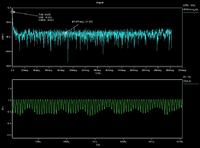lhlbluesky
Banned
for a relative large circuit, how to do transient noise analysis in spectre?
if my circuit is large (for ex: 5000 transistors, and 6 sub-blocks), then how to run transient noise simulation in spectre? what is the procedure?
how to add the stimilus, and how to observe the results,pls?
can anyone give me some advice or related papers?
besides, for a cmos image sensor, how to simulate its total noise?
thanks all.
if my circuit is large (for ex: 5000 transistors, and 6 sub-blocks), then how to run transient noise simulation in spectre? what is the procedure?
how to add the stimilus, and how to observe the results,pls?
can anyone give me some advice or related papers?
besides, for a cmos image sensor, how to simulate its total noise?
thanks all.
